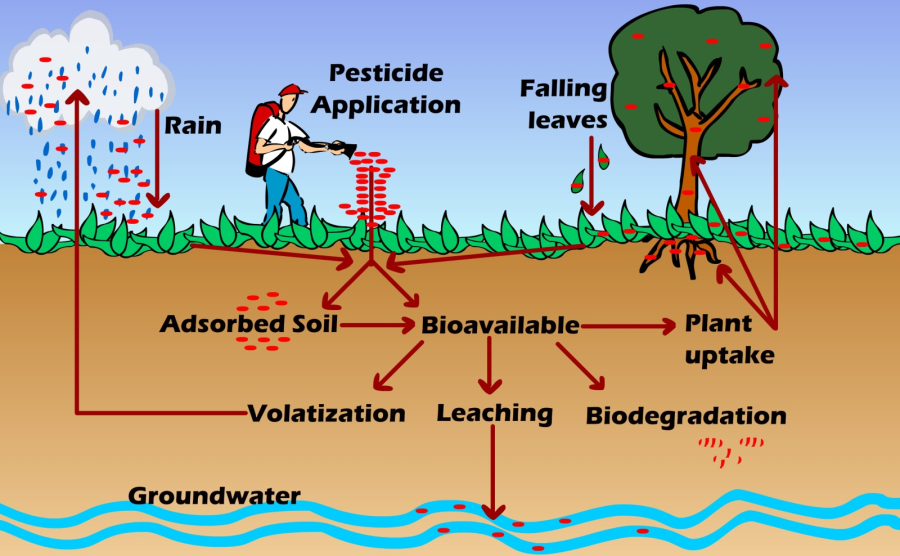Persistent Organic Pollutants Explained
POPs, “persistent organic pollutants,” are carbon-based chemicals that get into the environment and stay there for a long time without breaking down. They are bad for the environment and people’s health because they last for a long time and are hard for natural processes to break down, degrade, or become harmless.
But first, let’s look at what it means for a chemical or pollutant to be “permanent” in the environment and why this is a problem.
A wide range of organic chemicals, compounds, and pollutants can be broken down or absorbed by natural elements. For example, many organic pollutants end up in the soil, streams, and air, but nature has built-in ways to eliminate and break them down.
Pollutants only become a problem when nature can’t handle too many of them at once. This could be called a dangerous burden. Pollutants of any level are a big problem if they are hard to break down and stay in the air (atmosphere), water, or soil for a long time.
The name for these chemicals is persistent organic pollutants. Because people interact with their surroundings, this process may also happen inside our bodies, where certain compounds that are hard to digest and getting rid of them naturally may take longer to bioaccumulate. Because of this, many POPs are considered to be harmful, bioaccumulative, and long-lasting compounds.
In chemistry, hydrogen and carbon atoms are put together differently to form organic molecules called hydrocarbons. As pollutants, they cause problems, but most of the time, natural and human systems can filter or clean them up.
The problem happens when organic chemicals have been halogenated, either by accident or on purpose. Some normal or naturally occurring hydrocarbons are used, but one or more halogens, like chlorine, fluorine, bromine, or iodine, have been swapped for some of the hydrogen atoms. Organochlorines are a type of insecticide made by mixing chlorine with hydrocarbons.
Examples Of Persistent Organic Pollutant
Think about some real-world examples of persistent organic pollutants like insecticides, flame retardants, heavy metals, and other compounds.
The most well-known POPs are a few insecticides with organochlorines.
DDT (1,1,1-trichloro-2,2-bis(p-chlorophenyl)ethane), Toxaphene, Aldrin, Dieldrin, Endrin, Chlordane Mirex, Heptachlor, Hexachlorobenzene, Lindane, and Endosulfan are all insecticides that are used on crops.
Some other common pollutants
PCBs (Polychlorinated Biphenyls). Because they are cooled, lubricated, and insulated, they are often used in transformer oils in electrical distribution systems. PCBs that leak out of these transformers pollute the soil, stay in the environment for a long time, and are bad for the environment and people’s health.
The Effects Of Organic Pollutants
According to recycling experts at St. Louis Dumpster Rental Solutions, many common household items have dangerous chemicals in them that are called persistent organic pollutants. When they move freely through the ecosystem, they can hurt people, animals, and plants.
Organic pollutants that stay in the environment can get into the air from soil or water and be breathed in or swallowed, and they can also move the soil or water into the food chain. In other words, both people and animals can be affected by these toxins if they breathe them in or drink water that has been polluted.
Cancer and problems with the hormone system have been linked to several persistent organic pollutants. Some of them are bad for your kidneys, liver or brain. They may also show a child’s growth and hurt their immune system.
Consistent organic pollutants harm the environment and living things (POPs). The chemicals can get into the bloodstream and be stored in the body or the fatty layer of the skin, where they can affect the endocrine and nervous systems. People think that they are very dangerous and that they should take them out of the environment as soon as possible.
If POPs aren’t regulated, they can build up in the fat tissue of both humans and animals, which can lead to long-term health problems and even death. People and animals in developing and emerging countries are in danger from POPs.
They are often used as pesticides and industrial solvents. POPs are a large group of compounds that are hard to break down because they have similar chemical properties and structures.
If you know more about risks that come with POPs, you will be able to find them and stay away from them in the future. We hope this post taught you something new, and you’ll return to our site often to read more great stuff.
